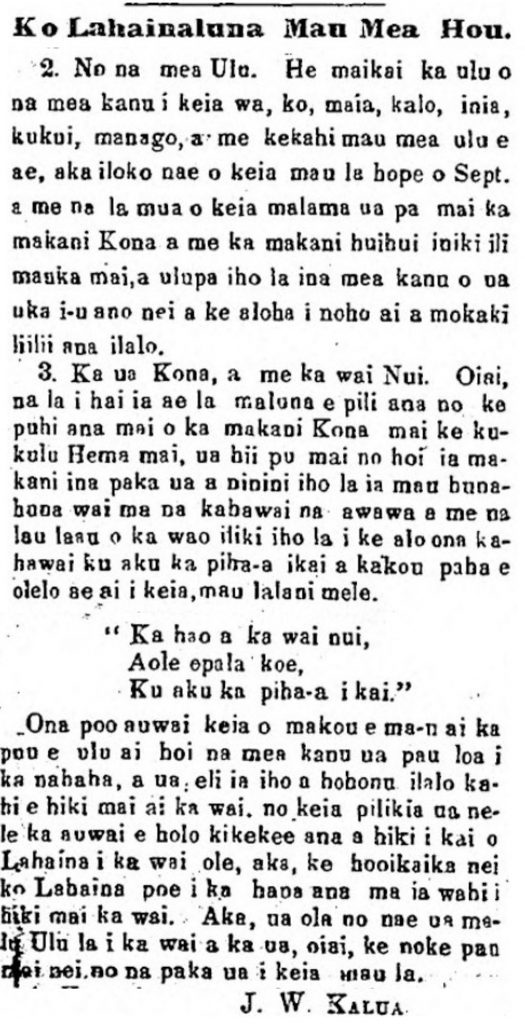
Ko Lahainaluna Mau Mea Hou
A wide-range of scholars, scientists, and researchers are lending their expertise and providing commentary on the tragedy in Lāhainā. Such proffered advice might come from well-intentioned individuals who generally ascribe much of the blame on climate change–a serious threat that we must all collectively grapple with. For practitioners of aloha ʻāina, this is common ground that we typically can agree upon.
More often than not, however, this viewpoint ignores the root cause simmering just below the surface. For example, in one article, a forester commented that, “these fires weren’t happening 30 years ago, during the plantation era. The underlying driver is the abandonment of agricultural lands. The native forest doesn’t come back by itself.” One possible solution referenced in the article suggested “building a golf course on the perimeter of a neighbourhood rather than at its centre.” Logically, this type of urban planning “would provide an effective firebreak.”
When you probe this article, and others like it, we invite you to ask these questions: whose voices are elevated and whose voices are missing? When people in power make plans for the future, whose interests are represented and whose interests are set aside? The erasure that occurs in many of these articles reminds us of our continuing kuleana to educate others about the indigenous people who lived here and their expertise that we might draw upon.
In this post, we introduce you to a selected piece written by J.W. Kalua about Lahainaluna in 1868. In this article, the author describes the plants, rain, and water in this area. We have much to learn from our past if we are only willing to listen.
If you want to learn the pule and oli to help support Maui, please visit this link.

News From Lahainaluna
- Concerning the Plants. Plants are growing well at this time: sugar, banana, taro, pride of India, candlenut, mango, and several other plants. However, during these last days of Sept. and the first days of this month, the Kona wind blew, as did the skin-pinching cold wind from the uplands, and destroyed the plants of the peaceful, lofty uplands where love resides, which came down in tiny, scattered pieces.
- The Kona rain, and the Great flow of water. During the days described above when the Kona wind blew in from the South, this wind also carried raindrops and poured these bits of water into the streams, valleys and leaves of the forest trees, pouring down on the surface of the rivers, washing litter to the shore, of which we might speak in these lines of song. “The great flow of water strikes / There is no rubbish remains / The litter is left at the shore.” The sources of our ditches that irrigate the hill where the plants grow were all broken and the place where the water comes from was dug down deep. Because of this problem, the ditch that zigzags back and forth down to the shore below Lāhainā lacks water, but Lāhainā’s people are working hard at that place so the water will come. However, that Breadfruit Shade [Lāhainā] survived with rain water, since the raindrops are continuing to drench these days. [ . . . ]
- J.W. Kalua
Citation: J. W. Kalua. 1868 October 15. “Ko Lahaina Mau Mea Hou.” Ke Au Okoa, Volume IV, Number 26, Page 3. Retrieved from Papakilo Database, http://papakilodatabase.com. Translated by Kapomaikaʻi Stone, Iasona Ellinwood and M. Puakea Nogelmeier. Institute of Hawaiian Language Research and Translation, 2013. Honolulu, HI: University of Hawaiʻi.
